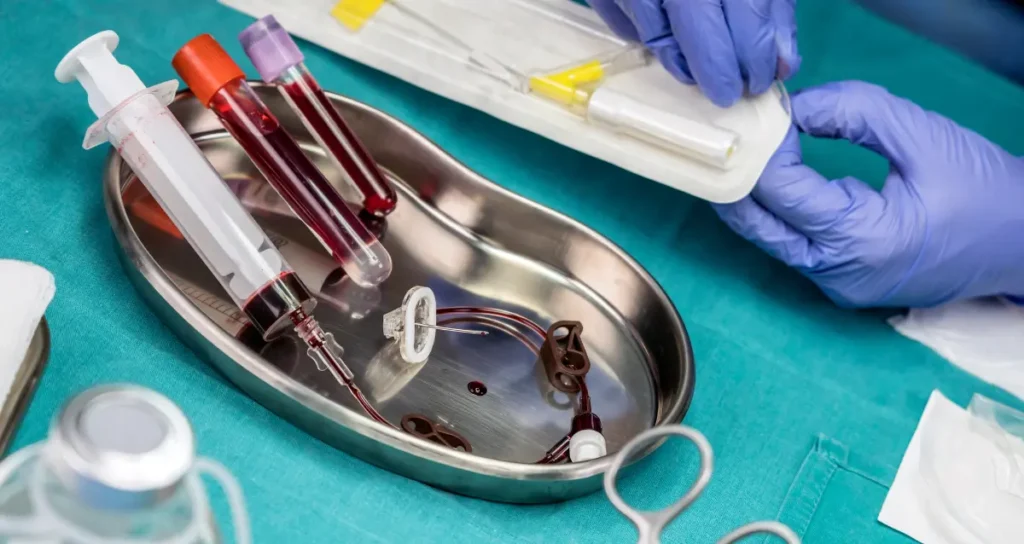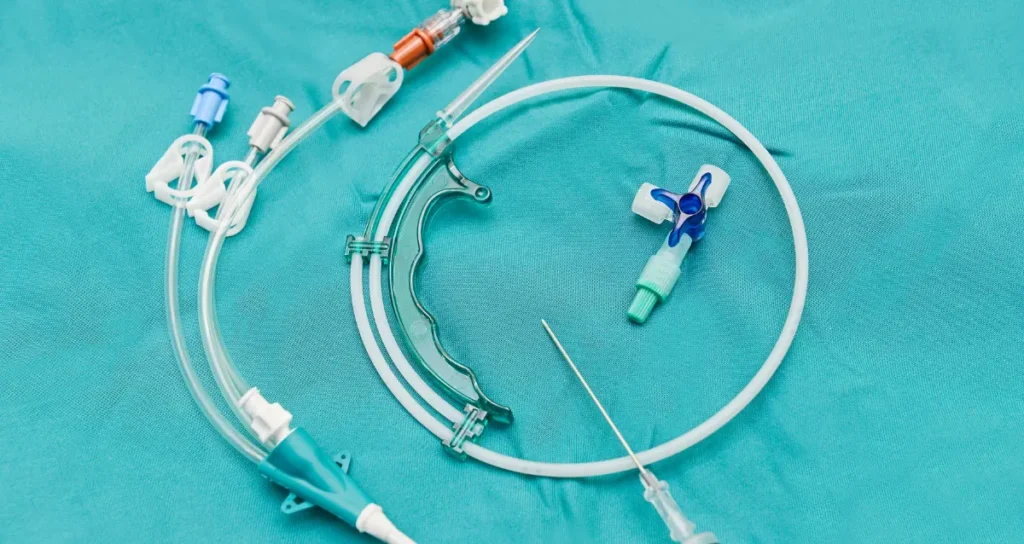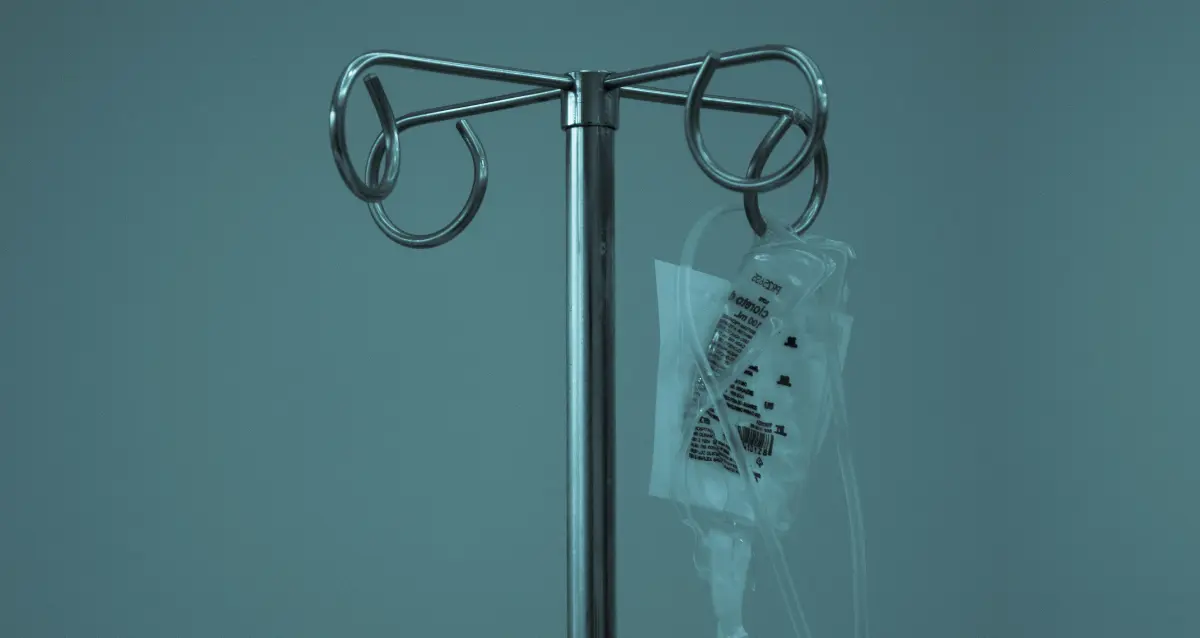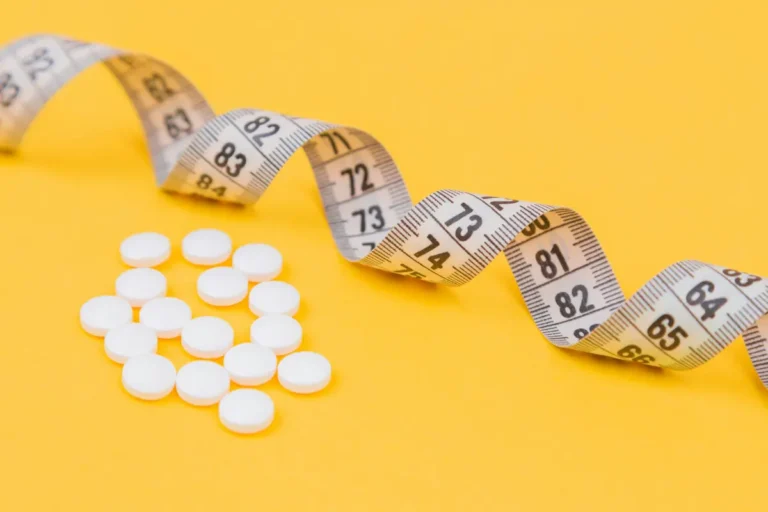Can Central Venous Access Devices Cause Infection? Exploring Strategies for Prevention
Central venous access devices (CVADs) are essential tools in modern healthcare. By offering direct access to the central veins of your heart, they facilitate the smooth delivery of medications, fluids, and nutrients. CVADs are particularly crucial for patients who require long-term intravenous therapy, frequent blood draws, chemotherapy, or intensive care.
CVADs come in various forms, including peripherally inserted central catheters (PICCs), central venous catheters (CVCs), implanted ports, and tunneled catheters. Despite their diverse designs, all CVADs share the same purpose: to provide a reliable and long-lasting means of delivering treatment directly into the bloodstream.
GlobeNewswire notes that the size of the global venous access device market is expected to grow at a CAGR of 7.1% by 2032. In 2022, the market was evaluated at USD 5.45 billion in 2022. The outlet acknowledges three factors contributing to it – the rise in the aging population, chemotherapy procedures, and the number of cancer cases worldwide.
While the benefits of CVADs are diverse, these devices are not without their potential risks. Today, we will narrow down on one such potential risk – CVAD infections. These infections can occur at the insertion site or within the bloodstream itself, leading to serious complications and potentially life-threatening consequences.
Join us as we embark on the journey of examining the potential causes of CVAD infections and their impact on the health of patients.
Causes of Infection with Central Venous Access Devices (CVADs)
Infections associated with CVADs can arise from various factors, ranging from microbial contamination during insertion to poor care and maintenance. Understanding these causes is crucial for implementing effective preventive measures.
Microbial Contamination During Insertion
Microbial contamination during CVAD insertion can happen due to several reasons. Straying from proper sterile techniques is one such reason, which leads to harmful bacteria entering your bloodstream. This includes not keeping the environment clean during insertion.
Furthermore, if insertion equipment isn’t handled or sterilized correctly, it can introduce microbes into the catheter or insertion site. Lastly, if the skin isn’t properly cleaned and disinfected before insertion, it increases the chances of bacteria growing at the catheter site.
It is for these reasons that ensuring cleanliness and using proper sterilization techniques during insertion is crucial for preventing infections.

Poor Maintenance and Care
Poor maintenance and care of CVADs can significantly increase the risk of infections. One of the key factors contributing to this is inadequate catheter care. Improper dressing changes, such as not using sterile techniques or failing to change dressings according to schedule, create opportunities for bacteria to enter the catheter site.
Torhoerman Law notes that the susceptibility of fracture in the CVADS can also serve as a potential cause for CVA-related infection, among other serious consequences. These include arterial puncture, pulmonary embolism, necrosis, tachycardia, hemothorax, and deep vein thrombosis (DVT).
Bard Power Port, a port catheter device manufactured and sold by Bard Access Systems Inc., is prone to defects causing significant health damage. The device is made using Chronoflex AL, a material made from barium sulfate and polyurethane.
It is believed that the barium sulfate particles in Chronoflex AL might be causing the catheter to fracture. In response to this threat, a Bard Power Port lawsuit has been filed against Bard Access Systems.
If you have a Bard Power Port and suffered dire health consequences, get in touch with a lawyer to join the lawsuit today.
Impact of CVAD-related Infections
While CVADs play a vital role in delivering essential treatments to patients, when these devices cause infection, the consequences can be significant.
Here’s an overview of the impact of CVAD-related infections:
Increased Morbidity and Mortality Rates
Pathogens that enter the bloodstream through the CVAD can cause bloodstream infections, leading to conditions such as sepsis, septic shock, and organ failure.
These complications often require prolonged hospital stays, intensive care, and aggressive antibiotic therapy to manage effectively. As a result, patients experience heightened morbidity and mortality risks, with some cases resulting in fatalities.
Here’s the evidence for the same:
A study about antimicrobial resistance and infection control published in BioMed Central examined 214 patients with central line-associated bloodstream infection – a type of CVAD infection. The result of the study concluded that the 30-day mortality rate of these patients was 33.6%.
Prolonged Hospital Stays and Healthcare Costs
Infections associated with CVADs often necessitate extended hospital stays for treatment, observation, and recovery. Prolonged hospitalizations not only impose a physical and emotional burden on patients but also increase overall healthcare costs.
Development of Antimicrobial Resistance
CVAD-related infections contribute to the emergence and spread of antimicrobial-resistant bacteria, posing challenges for effective treatment. The prolonged use of broad-spectrum antibiotics to treat CVAD-related infections can promote the development of antibiotic-resistant strains. This development can limit treatment options and increase the risk of treatment failure.

Strategies for Preventing CVAD Infections
Preventing infections associated with CVADs requires a comprehensive approach that addresses various stages of device use, from insertion to maintenance.
Here are several strategies healthcare providers can employ to minimize the risk of CVAD infections:
Following Proper Insertion Techniques
Proper insertion techniques are crucial for preventing CVAD-related infections. Healthcare providers should adhere to strict aseptic procedures during insertion, including thorough hand hygiene, sterile draping, and use of appropriate barriers like gloves and masks.
Ultrasound guidance during insertion can also improve success rates and reduce complications.
Choosing the Right Insertion Site and Device
Selecting the appropriate insertion site and device type is essential for preventing CVAD infections. Factors such as the anticipated duration of therapy, and risk of infection should be considered when choosing between different types of CVADs.
For example, using PICCs instead of CVCs for suitable patients can reduce the risk of infections associated with more invasive procedures.
Other Strategies
In recent years, antiseptic barrier caps have emerged as an effective strategy for reducing the risk of CVAD infections. These small, disposable devices are designed to fit securely over the catheter hub and provide a barrier against microbial contamination.
Antiseptic barrier caps are used to maintain the cleanliness and sterility of the hub of CVADs. By preventing the entry of bacteria and other pathogens into the catheter lumen, they reduce the risk of catheter-related bloodstream infections (CRBSIs).
The American Journal of Infection Control vouches for the effectiveness of antiseptic barrier caps. After conducting a study on patients with CVADs, the journal found that the risk of infection in patients using these caps was lowered by 35%. The study also revealed that these caps were cost-effective, appreciated by patients, and made it easier for healthcare providers to monitor the devices.
Frequently Asked Questions (FAQs)
How long does a Port-a-Cath last?
Surgeons believe that port-a-caths last anywhere between two to six years in general cases.
Is port catheter insertion a major surgery?
No. Inserting a port catheter needs an incision of only half an inch in length, leading to the procedure being categorized as a minor surgery.
Will I need stitches after a port catheter insertion process?
The skin incision made before inserting a port catheter into your body can be fixed with either surgical glue (called Dermabond) or sutures (stitches). However, these stitches will be absorbed into your body over time; you needn’t get them removed.
To sum it up, we agree that the risk of CVAD-related infections poses a significant concern for both patients and healthcare providers alike. These infections can lead to a series of health complications but can be avoided by practicing the prevention strategies discussed above.







